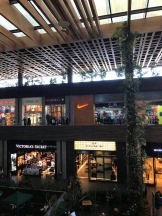I have been in the industry now since 1987. In 30+ years, we have worked with hundreds of great, honest landlords. And, one that wasn’t. Though it hurts to give up business, we did because of our own ethics. We were doing the year end reconciliations for the owner and, at one property, there were sizable credits due the majority of tenants. Somehow, the owner miraculously “remembered” central plant repairs that were never booked and would not only wipe out the credits, but create small amounts due. And, to top it off, the landlord intentionally ignored a most favored nations clause with a statements, “I don’t think that was ever the intent.”
That’s pretty horrendous. You hear the words “fiduciary responsibility.” The landlord has a fiduciary responsibility to the tenant to bill in accordance with the terms of the lease (among many other responsibilities). And in 30+ years, with hundreds of landlords, thousands of properties, hundreds of thousands of leases, we have come across only one dishonest landlord. That’s pretty awesome.
On the same note, when I first got in to the industry, I did tenant sales audits for a few years – probably around 1,000 myself, with the rest of the firm doing around 10,000 in that same time period. Twice, I had truly dishonest tenants. One was a situation where the tenant outright lied about sales – increasing the reported gross sales to the point of paying percentage rent so that the landlord would not exercise a sales related Kickout. The second instance was actually a department store with two locations in a center – one leased and one owned. In those days, recordkeeping was much more manually intensive, and I actually came across a note to intentionally move certain categories from the leased store to the owned store so that they would not hit the breakpoint. (Yes – back then, many department stores had sales high enough to pay percentage rent.) So, two out of perhaps 10,000. Again, I feel like that is pretty awesome.
Yes. There are hundreds of errors made daily, but most often they are honest errors (that most often favor tenants – seriously) because of system/billing limitations or interpretation issues. Perhaps a tenant is permitted to exclude employee sales from reported gross sales, but has only one code for both employee sales and “friends and family” sales. Did they underreport? Yes. Can they change their system to correct this? Likely, but the cost may be much greater than the hassle of dealing with the occasional sales audit, even if they ultimately have to pay for the sales audit because of the underreporting. Perhaps a landlord has a lease with a non-cumulative cap on CAM that has been treated as cumulative. Odds are, the person that set up the reimbursement method may have missed one of the dozens of codes necessary to properly administer that particular lease. In both cases, errors, but nothing intentional.
There is an absolute need for trust between landlords and tenants.
Why this post now? While we show adjustments to landlords that often include credits, all of our work is performed on behalf of landlords – never for tenants. However, a friend has a Crossfit gym and was having trouble with his landlord – a mom and pop tenant in a center owned by a mom and pop landlord. His expenses had not been reconciled for four years. The landlord finally sent a reconciliation. I sat with him as he tried to make sense of what the landlord had sent – a skeleton of a reconciliation. The only expenses that could be verified were real estate taxes, which were overstated on the rec by nearly 25% per year! Unfortunately, I think I may have found a second culprit. Not a client. But, this one experience of just helping a friend that doesn’t look at (or understand) his lease reiterates to me the trust and honesty required between landlords and tenants.









